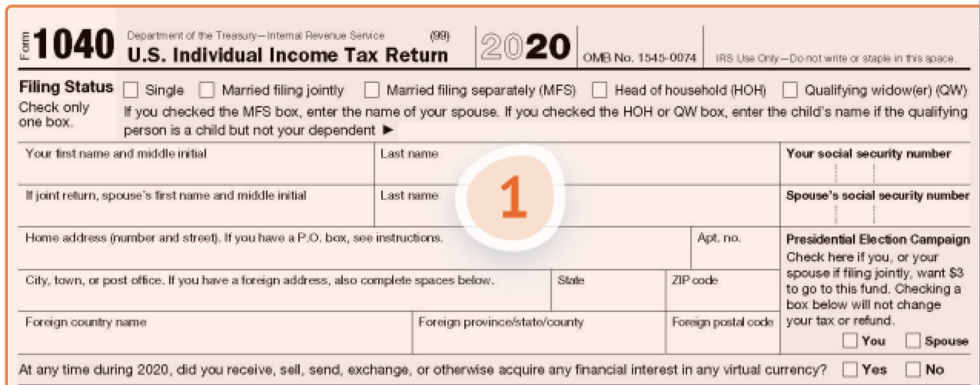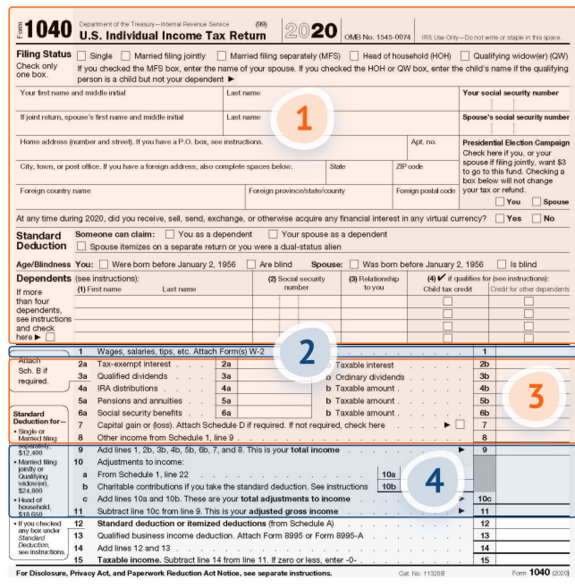How to Read My US Tax Return

After we prepare your return, we will ask you to check it for accuracy. Of course, we are not asking you to do our job and verify that your tax positions were taken correctly.
Instead, you should check that your personal details and basic facts are correct. Specifically:
- Please review the first page of Form 1040 to catch any possible typos in your basic information (e.g. your name, address, social security number, and tax filing status).
- When reviewing your information, make sure to review the information listed for your spouse and children; names and Social Security numbers have to be written exactly as they are shown on the Social Security card.
- Line 1 of Form 1040 reports your wages: Have they been reported accurately?
- Extremely important: If you have decided to have your refund (if one is owed) deposited directly into your account, check the account and routing numbers you have provided
- Taxes paid to a foreign country earn you credits with the U.S. government. This credit is applied by way of Form 1116. It is important to note that you are not able to claim a foreign tax credit on amounts already deducted from US-earned wages.
- You may have multiple Forms 1116 if your taxed foreign income comes from various sources. Be sure to check each form, separately, for accuracy.
This was a basic overview of how you should review your expat tax return after it’s complete. What follows is a more thorough overview.
Expat Tax Return and Form 1040
Form 1040 is the front page of your expat return. Please review this form to eliminate any possible typos in your basic information (including your name, address, social security number, and tax filing status).
What you need to check
- Basic Details. This section contains your full name, Social Security number, and address. The address used in this section will be used by the IRS should they need to contact you. The filing status is also selected to determine the appropriate tax rates to apply. You should list your spouse and children or dependents here.
- Wages and salaries. Line 1 contains your salary income (including bonus and equity) as reported on your W-2. Any taxable wage income from foreign payrolls is also included here.
- Non-wage income. Your worldwide investments/other income is reported in this section. Make sure that the figures in Line 2 (Interest), Line 3 (Dividends), and Line 7 (Capital Gains) are correct).
- Deductions. Taxpayers can either take the standard deduction or itemize deductions.
Read through everything on Form 1040 to be clear it makes sense with your life. Line 7 claims that you sold stocs and received a capital gain. Is this true? Line 1 reports your wages, does it seem that they have been accurately stated? Are all applicable deductions present and accounted for?
Form 1040 tips
When it comes to the filing status, many U.S. expats are under the impression that they are not allowed to file jointly with their non-resident alien spouse. This is not the case, and a tax identification number can be obtained that will allow you to file jointly. Of course, this means that you are submitting all of your non-American spouse’s income to the U.S. government for taxation. The benefit of this is a bigger standard deduction and the ability to claim the foreign earned income exclusion (for both of you).
When reviewing your information, make sure to review the information listed for your spouse and children. The tax benefits from children can be large, so don’t forget that you can claim your children until they are twenty-four (if they are full-time students) - provided they have social security numbers.
On the second page, double-check the amounts that have been withheld (applicable if your employer is a U.S. business). Money withheld from your paychecks is tax you have already paid, and it lessens your current tax liability.
Extremely important: If you have decided to have your refund (if you are owed one) deposited directly into your account, check the account and routing numbers you have provided.
Probably the second most important form, in regards to your expat return, is Form 2555. This is the form that details the Foreign Earned Income Exclusion. If you are eligible, you will use Form 2555 to calculate the applicable foreign-earned income and foreign housing exclusions. On the first page of this form, you will be asked very common and easily understood questions. Read through them and check the answers that are listed. If the bona fide residence test proves your expatriate status, make sure that every question in Part II has been completed. The dates on Line 14 will be especially important. Part II can be skipped, however, if you qualify as an expatriate under the guidelines of the physical presence test. In this case, Part III must be fully completed.
It is important to determine exactly how much of your income is “foreign earned”. This is done in Part IV. Carefully read through the questions and answers under Part IV to be sure the figures listed are accurate. Reading over a long list of numbers might tend to bore you a bit. But each and every number on Form 2555 is extremely important to your tax life as an expat.
Be sure to verify that the exclusion rates (in regards to your foreign housing) have been adjusted to your country of residence. The rates tend to vary from country to country. You should also double-check the tax liabilities placed on your country by visiting the IRS website.
The exclusions granted to you as an expat are only valid if you have submitted Form 2555, and if you have submitted it on time. Even if you are completely sure that all of your owed taxes have been covered by your exclusions, the exclusions only apply to expats who have submitted Form 2555.
Credits and Form 1116
If you receive a “tax credit” your tax liability is lowered by that amount. It is easy to let credits go unnoticed, however. One of the reasons people, especially expats, hire professionals to do their taxes is to be sure they have taken advantage of every credit available to them. Credits are available for children, higher education, and a variety of other things. Check with a tax expert before assuming you have claimed all applicable tax credits.
Taxes paid to a foreign country earn you tax credits with the U.S. government. This credit is applied by way of Form 1116. It is important to note that you are not able to claim a foreign tax credit on amounts already deducted from US-earned wages. You are also unable to claim the foreign tax credit in tandem with the foreign housing exclusion. Foreign taxes are complicated! Be sure that your tax preparer is skilled in expat tax law. You may have multiple 1116 forms, if your taxed foreign income comes from various sources. Be sure to check each form, separately, for accuracy. 1116 is notoriously confusing, but it is still important to have seen and reviewed your tax information personally.




